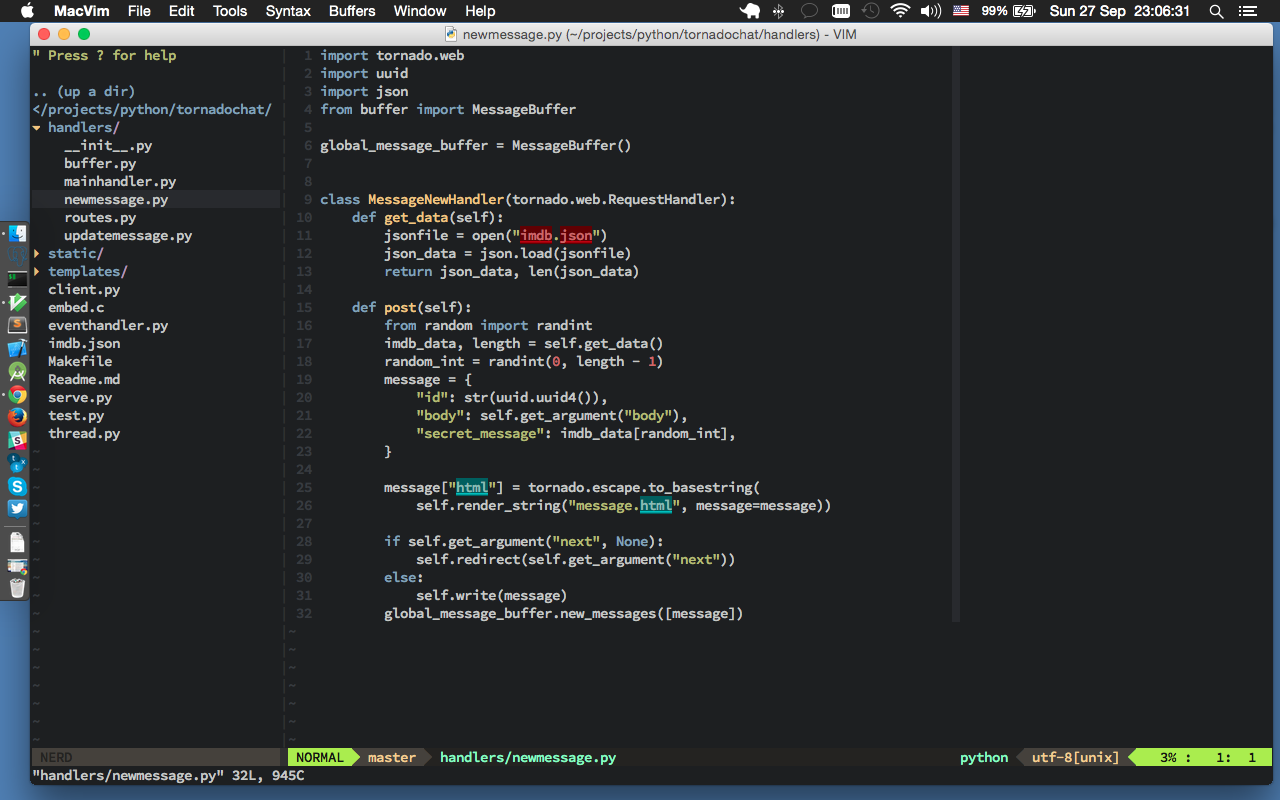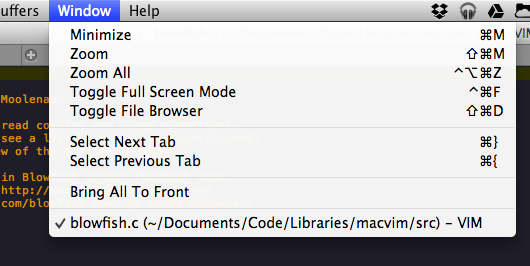


All its service files will be selected automatically. Select MacVim in the Applications tab.To delete the Vim editor using App Cleaner & Uninstaller from your Mac, follow the next steps:
#MACVIM MAC#
We recommend you use App Cleaner & Uninstaller that completely removes programs from Mac in less than a minute. If you want to delete the Vim Mac version from your computer in a much easier way, try a third-party uninstaller. Then, empty the Trash bin to get rid of Vim entirely from your Mac.~/Library/Saved Application State/ĭepending on your use of the Vim editor, you can also check to see if any unneeded MacVim service files are stored in the next Library subfolders: The supporting files of MacVim are commonly located in the following directories: Within the Library folder, step by step find and remove the useless service files related to Vim.To access this folder, click Go in the Finder’s menu bar → select Go to Folder from the drop-down menu → type ~/Library in the window that appears → click Go. These are mainly stored in the hidden Library folder. Now, delete the service files of the MacVim app on your disk.Right-click on it and select Move to Trash from the menu that appears. In the Applications folder, find and select the MacVim.app file.Therefore, to completely delete the Vim app from your Mac, you would need to remove all its components as well. Depending on how and how long you have been using MacVim, the app has created lots of service files on your disk.
#MACVIM FOR MAC OS#
If you want to delete Vim for Mac OS from your computer, you should remember that it is a complex software tool, which contains an executable file and various service files. In this article, we want to share with you two ways to uninstall Vim on Mac. If you’ve experienced any tricky technical issue with it, probably the only way to fix it is to reinstall Vim on your computer.

So if you don't need iTerm2's advanced features you can safely use the default terminal emulator.Vim is a customizable text editor. I'm still on 10.6.x at work so I'll still use iTerm2 for a while.ĮDIT: An even better way to use MacVim's CLI executable in your shell is to move the mvim script bundled with MacVim somewhere in your $PATH and use this command: $ mvim -vĮDIT: Yes, Terminal.app now supports 256 colors. So… basically my advice is to just use both.ĮDIT: I didn't try it but the latest version of Terminal.app (in 10.7) is supposed to support 256 colors. To have the same vim in MacVim and Terminal.app.Īnother difference is that many great colorschemes out there work out of the box in MacVim but look terrible in the Terminal.app which only supports 8 colors (+ highlights) but you can use iTerm - which can be set up to support 256 colors - instead of Terminal. profile: alias vim='/path/to/MacVim.app/Contents/MacOS/Vim'

#MACVIM INSTALL#
You may install an up-to-date version via MacPorts or you can install MacVim and add an alias to your. Using one or the other is just a question of context for me.Īlso, like El Isra said, the default vim (CLI) in OS X is slightly outdated. Now I use both MacVim and Vim almost exactly the same way. I added some of my own, mimiking TextMate but, since I was working in multiple environments I forced my self to learn the vim way. When I switched from TextMate I kind of liked the fact that MacVim supported almost all of the regular shortcuts Mac users are accustomed to. I use both MacVim and Vim depending on the task and the context: if I'm in CLI-land I'll just type vim filename and if I'm in GUI-land I'll just invoke Quicksilver and launch MacVim. If you work mainly with CLI apps (ssh + svn + tcpdump, for example) you may prefer vim in the terminal.Įntering and leaving one realm (CLI) for the other (GUI) and vice-versa can be "expensive". If you work mainly with GUI apps ( YummyFTP + GitX + Charles, for example) you may prefer MacVim. MacVim is more integrated in the whole OS than Vim in the Terminal or even GVim in Linux, it follows a lot of Mac OS X's conventions. Anything you are used to do in Vim will work exactly the same way in MacVim.


 0 kommentar(er)
0 kommentar(er)
